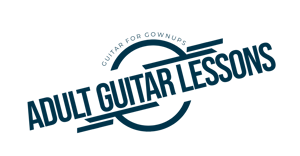In an earlier discussion we talked about the importance of lyrics in your songwriting. (see “Songwriting – Lyrics”)
We also discussed the fact that in country music the emphasis is often placed on the lyrics, but in rock pop music, the melody is often the driving force behind the song.
The Melody
A song’s melody is usually the first thing a listener will remember. It is what gets, and keeps, their attention.
 The melody is comprised of the notes that are played or sung on top of the song’s chord progression.
The melody is comprised of the notes that are played or sung on top of the song’s chord progression.
In many circumstances a typical song will actually consist of several melodies, a separate one for each section of the song. (see “Basic Song Structure”)
As you can imagine, a song with the same melody just repeating itself over and over could become pretty boring. So you will normally hear a distinct melody for the verses, a different one for the choruses, and yet another different melody in the bridge, if the song has one.
Chorus Melody
Many consider the melody for the chorus to be the most important element of the song. The chorus should “soar” above the rest of the song and be the one thing that “sticks” to the listener after only hearing the song one or two times. In the writing process the chorus melody is often the first part of the song that is written, and the rest of the song is written around it.
Verse Melody
The melody for the verses is typically more subdued than the chorus melody. The melody notes are often in a lower range than the chorus melody and the verse melody serves as a “setup” for the big “payoff” of the chorus. The verse melody will normally transition smoothly into the chorus melody.
 Bridge Melody
Bridge Melody
If the song has a bridge, then the bridge melody is usually different than the verse and chorus melodies. Sometimes radically different. The bridge melody typically serves to break up the repetition of the verse and chorus melodies and keep the overall song fresh to the listener.
Re-Writing Past Melodies
With the millions of songs that have ever been written it might be hard to imagine being able to write a melody that is completely new and that people have not heard before.
But the fact is that new melodies are written everyday. The combination of note intervals along with variations in timing leave unlimited possibilities when writing melodies.
It is inevitable, however, that as you are writing your own melodies you will come up with something that “sounds” familiar. Something you swear you’ve heard it before but can’t put your finger on where.
This happens to all of us. Melodies come out of our subconscious mind from something we heard in the past. This is not a matter of trying to “steal” a melody, it just comes out.
Turn on the radio and you can hear evidence of this all the time. Songs that will have a line or two of melody that sounds like something else. This is simply matter of the songwriter’s subconscious mind inserting a piece of a melody that they heard in the past.
Keeping Melodies “Fresh”
So with all these melodies floating around in your head, how do you come up with truly original ideas?
One way is to allow yourself some “Doodle Time”. (see “Practicing on Guitar”) This is when you allow yourself to float freely, whichever way the musical winds want to take you. These are times when you turn off the “internal editor” and just let yourself play or sing whatever comes out with no regard for what’s right or wrong.
You might not always “strike gold” by doing this but there are times when “magic” happens, just by letting go and not thinking too much.
If you are stuck on a melody you have written that you know sounds familiar, you can try to change one or two of the notes to something else. Or change the inflection of the way you are singing it, or maybe change the timing up a little bit. These are all things that can take a familiar sounding melody and give it a new twist by making it truly your own.
Sometimes it can help just to play around with note intervals on the guitar and see if new melody ideas pop out. This would be another variation of “Doodle Time”. You could also sit down at a piano (or anything other than your guitar) and play random notes until something starts to pop out at you.
The Melody Test
Of course the best way to try out a new melody or to see it you have just re-written something that’s already been written, is to play it for some friends whose opinion you trust.
 There is just no substitute for the “human ear” test. In is the truest way to measure whether you have a melody that is going to “stick” to a listener.
There is just no substitute for the “human ear” test. In is the truest way to measure whether you have a melody that is going to “stick” to a listener.
If you are aspiring to write your own song try to devote some time to just coming up with some unique melodies without worrying about lyrics. It’s a great way to get started on that next big hit!
Please do not hesitate to contact us with any questions!



